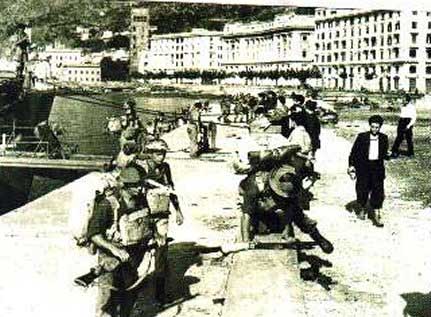Salerno Capital of Italy
From the 10th February to the 15th July 1944 Salerno was the capital of Italy. At the beginning of 1944 Italy from Monte Cassino to the north was still under German occupation and in these circumstances the city of Salerno was chosen as the seat of the first post-war governments. The “Executive of National Unity” were formed after the so-called “turning point of Salerno” with which the Communists, guided by Togliatti, put aside their opposition towards the monarchy in order to constitute - together with the other political forces – a government of national liberation, which was consolidated mainly with Bonomi’s second government.
On the 11th February 1944 Pietro Badoglio’s first government was transferred to Salerno. Two ministers from Salerno were part of it, Giovanni Cuomo for National Education Minister and Raffaele Guariglia for Foreign Affairs. On the 27th April 1944 the first council of ministers of the government of national unity met after the fall of Benito Mussolini and of Fascism, the first step towards the reestablishment of democracy in Italy.

The minister Cuomo, during Badoglio’s second government, obtained to create the “Magistero” of Salerno with seat in Palazzo Pinto in the old “Via dei Mercanti”. This way the university studies were re-established in Salerno, after the Medical School of Salerno was closed in the Napoleonic period and the last trace of a university in Salerno was abolished by the minister Francesco De Sanctis right after the Unification of Italy.
Ivanoe Bonomi (Bonomi’s 2nd Government), become President of the Council of Ministers on the 18th June 1944 thus substituting Pietro Badoglio, realised with Togliatti the “turning point of Salerno”. On the 4th August 1944 Rome was set free from the Germans, but the government continued to meet in Salerno until mid-August 1944, when it was finally transferred to Rome. In those five months in which Salerno had been the capital, king Vittorio Emanuele III resided in a villa just outside Vietri sul Mare and participated in the political life of Salerno. Alfonso Menna, who was Mayor of Salerno in the 1950s, used to say that the idea of building the Promenade of Salerno had been the King’s.
(Extract from Wikipedia)